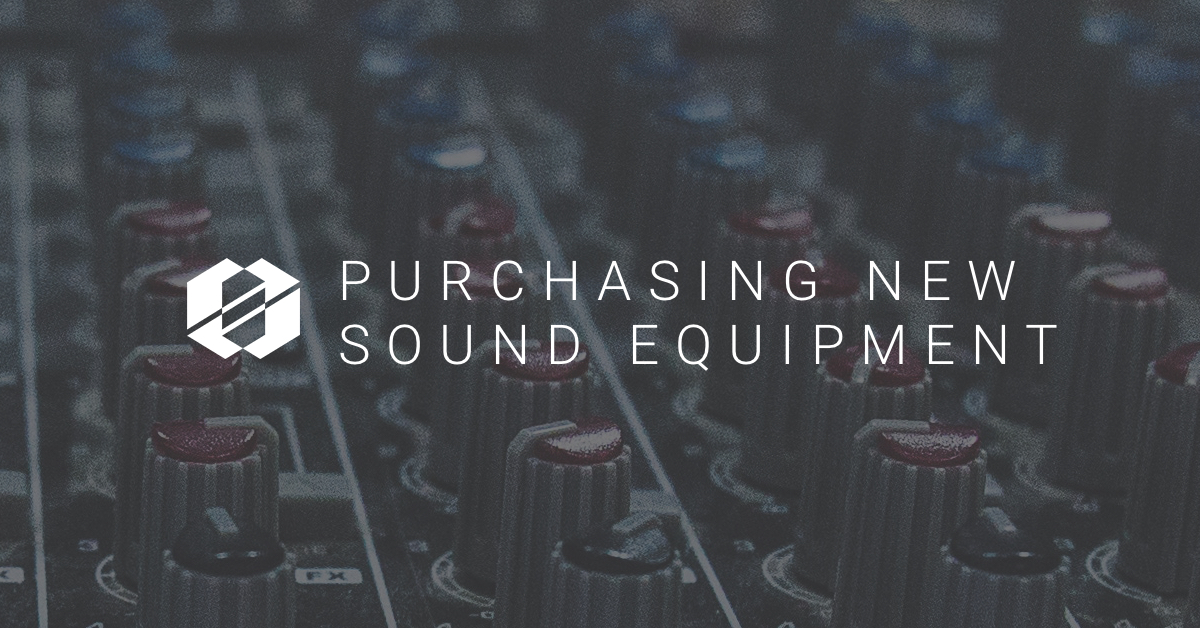In some ways, we live in the golden age of AVL technology. Never before have we been able to do so much for so little. The equipment has shrunk in size and cost, and it does more than ever before. The first mixer I bought for my church back in the day was a 16-channel analog desk with no effects or compressors. It cost almost $3,000. Now for that money, you can get 40 channels of processing, EQ, compression and gates on every channel and a rack full of built-in effects.
Purchasing new sound equipment can be a daunting task, how do you choose among the huge variety of solutions for every task? Below are some guidelines I use when helping my customers and fellow church techs decide on new gear.
Is it the right equipment for the job?
It’s surprisingly common to see churches using cobbled together systems with mis-matched equipment that only sort of works. Most of the time, this equipment was purchased by well-meaning but ill-informed volunteers. Many a church has wasted a lot of money experimenting with AV equipment. When purchasing new sound equipment, if you need professional advice, get it. It is often worth paying just a little more to buy from a company that can give you good advice as opposed to Amazon with Prime shipping.
Does our team know (or can learn) how to use it?
When purchasing new sound equipment, make sure you pay attention to the people that will use it. This is usually a problem with larger purchases–video switchers, audio mixers, lighting consoles and the like. I know of more than one church that lost its entire audio team because they purchased a new console that the team couldn’t (or didn’t want to) learn. Just because the giga-church down the street or across the country uses console X doesn’t mean it’s the right fit for your team. A $100,000 audio mixer is an expensive paperweight if no one on the team can use it.
EXCLUSIVE BONUS:
Get a FREE download of the 8 Backstage Videos from SALT Community. Including Audio and Atmosphere, Kinetic Lighting and more. Click to download!
Is this solving the real problem?
In some cases, purchasing new sound equipment may not offer a solution. In some cases, I’ll get a call from a church looking to solve say, a feedback problem with their pastor’s mic. They will buy mic after mic, plugin after plugin and nothing works. It often turns out the speakers are aimed directly at the part of the stage where he speaks. Re-aiming the speakers or installing a PA that’s properly designed for the room is the correct fix. Make sure you’re solving the actual issue and not simply treating the symptoms.
Does this work with the rest of the system?
Similar to #1, it is important that each piece of equipment integrate with the rest of the system. Video systems are notorious for this, but audio systems can suffer this fate as well. I’ve seen audio paths that go from MADI to Dante to Aviom, back to Dante, to MADI then analog for the IEM transmitter. And while it technically does work, it’s extremely complicated and has many points of failure. Simply choosing a different personal mixing system would have simplified that system dramatically.
Likewise, I’ve seen video systems go from DVI to HDMI to SDI and all the way back, sometimes with HDBase-T thrown in for good measure. Can it work? Yes. Is it smart? Maybe not.
Will it last?
When you need a half-dozen headset mics for a one-off children’s play, spending $60 apiece on them makes sense. However, spending $150 every year for your pastor’s mic may not be the best use of funds. Often, the best value is not necessarily the cheapest. I like to use the phrase, “Buy once, cry once.” Buying four $300 headset mics and then finally stepping up and buying the $500 mic is more expensive than simply spending $500 up front.
There are certainly more guidelines, but this list hopefully points you in the right direction. As the AVL landscape grows, it’s harder and harder to keep up. Today more than ever, getting advice from an experienced professional is often the best place to start. If people you are seeking advice from aren’t asking some of these questions, it might be a good idea to seek additional advice.



